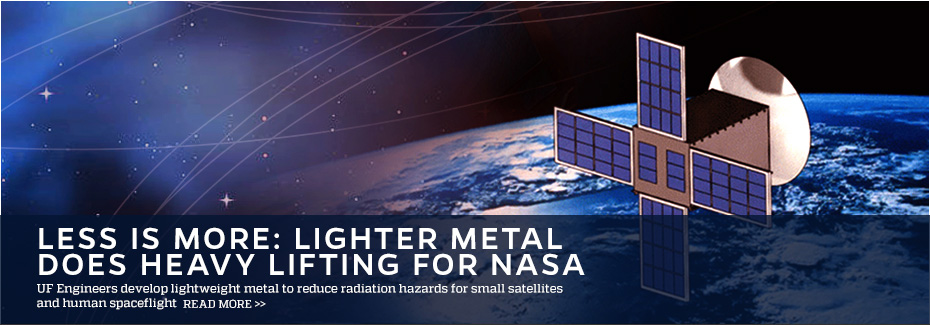NASA is collaborating with the University of Florida’s Department of Materials Science & Engineering for its RadSat project. The participating lab, led by Michele Manuel, Ph.D., department chair, developed a lightweight magnesium alloy.
One of the concerns of space travel is the radiation experienced by astronauts, devices and structures. Traditionally, spacecraft have been made of aluminum and steel, but recent developments show these have not provided adequate radiation protection and are heavier than other lightweight alloys. The newly developed magnesium alloy, which is stronger and lighter than steel or aluminum, will be tested for effectiveness in protecting people and items in space.
The goal is to create lighter spacecraft and reduce the radiation exposure to the crew and equipment. This can be done by creating alloys that generate less radiation as a by-product of the interaction with galactic cosmic rays or capture lower energy radiation that is present on other planets, such as Mars. These neutrons are a serious health hazard because they are responsible for nearly half of the crew’s radiation dosage and significantly increase their risk of cancer. The radiation also damages electronics, which can cause system failures.
In September 2017, SpaceX CEO Elon Musk unveiled new details about plans to colonize Mars and send cargo missions to Mars as early as 2022. Without proper shielding, these missions will not be possible.
The UF experiment will determine the metal’s usefulness in reducing the weight of spacecraft while mitigating the risks posed by radiation to future human spaceflight endeavors.
